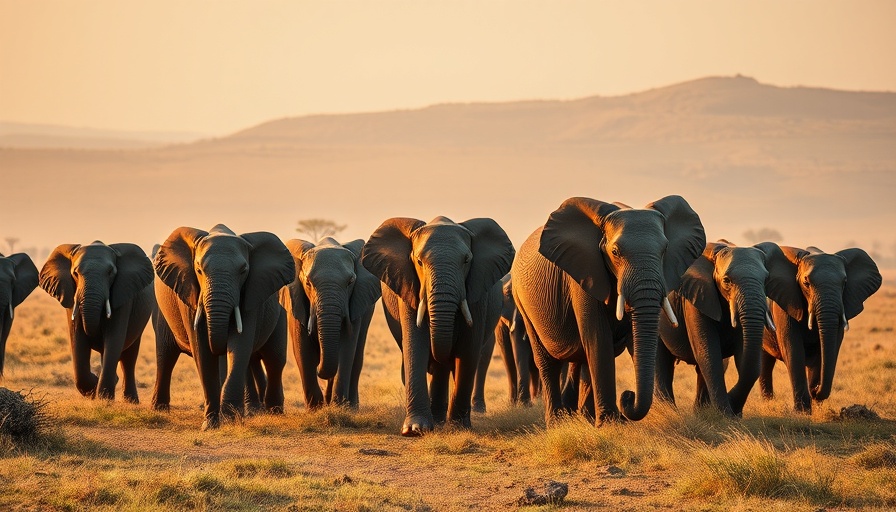
A Tragic Incident Unfolds at Kruger National Park
In a poignant reminder of nature’s unpredictable ways, a tragic incident has occurred at the gates of one of South Africa's premier wildlife destinations, Kruger National Park. A local tourist was charged and subsequently trampled by an elephant near the Malelane Gate, resulting in fatal injuries. The national parks authority has expressed deep condolences to the victim's family, emphasizing the need for careful protocols in wildlife interactions.
The Challenges of Wildlife Tourism
This incident raises pressing questions about the safety measures in place for tourists eager to connect with nature. With increasing wildlife tourism, understanding animal behavior becomes essential. Visitors often find themselves in close vicinity to these magnificent creatures, but conflicts can arise when animals feel threatened or surprised. Such tragic occurrences underline the necessity for comprehensive guidelines and safety protocols that enhance tourist safety while respecting wildlife habitats.
Investigation and Implications
As the South African National Parks (SANParks) starts its investigation, it is vital to approach this incident with a focus on transparency and accountability. The authority has not only offered condolences but called for a cessation of sharing graphic content related to the incident on social media, which could hinder the investigation. This highlights the importance of responsible media conduct in sensitive situations. In times like these, the public’s response can influence how future protocols are developed and enforced.
Broader Context: Wildlife Conservation and Tourism
The incident at Kruger National Park brings to light the delicate balance between wildlife conservation and tourism. While parks allow for unique encounters with nature, they must also be proactive in ensuring the safety of both animals and humans. Educational programs targeted at tourists regarding animal behavior and safety could help mitigate risks, promoting a culture of awareness that respects the wildlife they come to observe.
Conclusion: A Call for Change
This tragic event serves as a somber reminder of the inherent risks in wildlife tourism. As investigations unfold and more details emerge, it is essential for tourism stakeholders and conservation bodies to re-evaluate their strategies. Adapting to change will not only honor the memory of those lost but also foster a safer environment for future visitors and wildlife alike.
 Add Row
Add Row  Add
Add 




Write A Comment